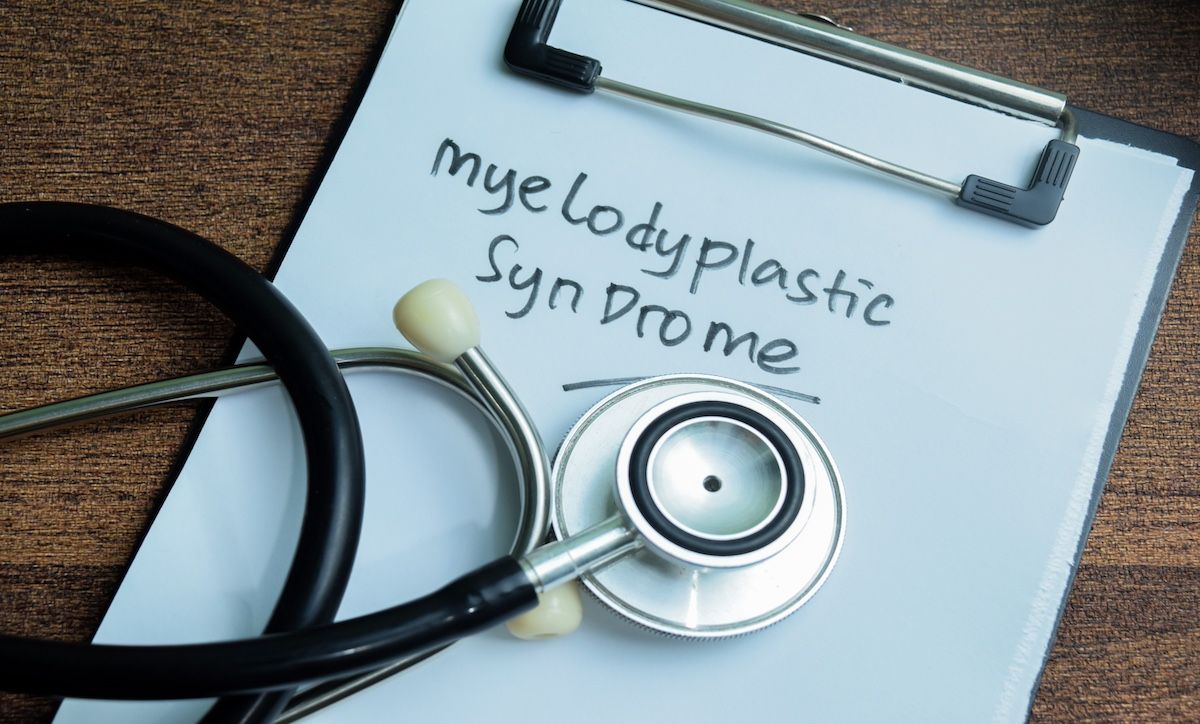Article
Evaluating Safety, Efficacy, and Outcomes of TKIs in CML
A poster session on the second day of the 56th annual meeting of the American Society of Hematology, held December 6-9, San Francisco, was dedicated to trials evaluating therapeutic options in chronic myelogenous leukemia. Data presented included safety, efficacy, managing comorbidities, and biological differences that drive response to therapy.
A poster session on the second day of the 56th annual meeting of the American Society of Hematology, held December 6-9, San Francisco, was dedicated to trials evaluating therapeutic options in chronic myelogenous leukemia (CML). Data presented included safety, efficacy, managing comorbidities, and biological differences that drive response to therapy.
One poster, “Long term outcomes of first line tyrosine kinase inhibitors for chronic phase chronic myeloid leukemia: a mixed-treatment comparison,” summarized the efficacy and safety of tyrosine kinase inhibitors (TKI), comparing them directly and in-directly, in the mature follow-up for patients with newly diagnosed chronic phase (CP)-CML.
The authors included data from randomized controlled trials evaluating TKI in adults with newly diagnosed CP-CML. TKI (imatinib, dasatinib and nilotinib) were included if used as an initial treatment. Studies on bosutinib were excluded as it is only approved in the US for the treatment of CP-CML after failure of initial therapy. Studies that included patients with accelerated- or blast-phase CML, intolerant or resistant patients to first-line treatment, those on IFN-α, older agents, or stem cell transplantation were excluded. Main outcomes examined were efficacy, represented by major molecular response (MMR, ≤ 0.1% BCR-ABLIS) and deeper molecular responses (MR4.5, ≤ 0.0032%IS), survival, represented by overall survival and progression free survival, and safety represented by medication discontinuation rate due to adverse events. As available trials provided direct comparison with imatinib, with no head-to-head trials to compare other TKI, the authors conducted a mixed treatment comparison (MTC) analysis, which pools evidence from direct and indirect comparisons to facilitate simultaneous inference regarding all treatments. Bayesian mixed-treatment comparison method was used to rank TKI in terms of effectiveness. The study identified 4 landmark trials, including the DASISIOn and ENESTnd trials, which included 1647 patients with CP-CML. Follow-up times ranged from 3 months to 6 years. MTC analysis on these reported trials demonstrated superiority of both nilotinib and dasatinib over imatinib in terms of efficacy and safety. Nilotinib ranked first in efficacy with better MMR and MR4.5 after a 2-year follow-up, followed by dasatinib. Dasatinib was observed to have the highest medication discontinuation rate due to adverse events or drug-related toxicity. Among TKI, nilotinib was found to have the best survival profile, though statistically nonsignificant.
The authors concluded that both nilotinib and dasatinib are associated with significantly better efficacy and safety profiles compared to imatinib. After a 2-year follow-up, nilotinib ranked first to achieve MMR and MR4.5, with lower discontinuation rate due to adverse events. The authors conclude that new generation TKI exhibit a faster and more potent response over a longer follow-up period.
Results of the PACE trial were also presented during this poster session; the study authors presented their data as the “Long-term follow-up of ponatinib efficacy and safety in the phase 2 PACE trial.” The trial evaluated efficacy and safety of ponatinib (45mg qd) in CML and Philadelphia chromosome-positive acute lymphoblastic leukemia (Ph+ ALL) patients who were resistant/intolerant to dasatinib or nilotinib or if they harbored the T315I mutation. The authors clarified that in October 2013, the trial was placed on partial clinical hold due to observation of arterial thrombotic events (ATEs) in the ponatinib clinical program, following which dose reductions were recommended. They now report long-term follow-up analysis (minimum 23.9 month follow-up from last patient, first visit). For ATEs, exposure adjusted yearly incidence rates were calculated as (number of patients with first event in interval)/(total exposure for the interval)*100 [AEs per 100 patient years (AE/100 PY)]. Rates for later intervals excluded patients with prior events.
Patients in this study group were heavily pretreated: 58% received more than 3 prior TKI. Most common reasons for discontinuation were progressive disease (21%) and adverse events (AEs). For CP-CML patients, 2-year major cytogenetic response (MCyR) duration, preogression-free survival (PFS), and overall survival (OS) estimates were 87%, 67%, and 86%, respectively. For accelerated-phase (AP) CML, blast-phase (BP) CML, and Ph+ ALL, estimated OS at 3 years was 59%, 9%, and 16%, respectively. AEs in 64% CP-CML patients were managed by more than 1 dose reduction within the first year. The study authors observed that responses were generally maintained after dose reduction: 99% maintained MCyR, 96% maintained complete cytogenetic response, and 90% maintained MMR. Frequent (≥20%) treatment-emergent AEs were thrombocytopenia (44%), abdominal pain (41%), rash (41%), constipation (37%), headache (37%), dry skin (35%), fatigue (29%), pyrexia (29%), nausea (28%), arthralgia (28%), hypertension (26%), neutropenia (25%), anemia (22%), myalgia (21%), diarrhea (21%), vomiting (21%), increased lipase (21%). Most-common serious AEs were pneumonia (7%) and pancreatitis (6%). ATEs were observed in 19% patients included cardiovascular 10%, cerebrovascular 7%, and peripheral vascular 7% events. Venous thromboembolic events were observed in 5% patients.
The authors reported that after a 3-year follow-up, 22% of the CP-CML patients achieved MR4.5 and 83% remained in MCyR. PFS and OS at 3 years were 61% and 82%, respectively.
Based on their trial data, the authors conclude that ponatinib continues to exhibit deep and durable responses in heavily pretreated pts with longer follow-up, particularly CP-CML. A dose reduction strategy was implemented in response to the observation of ATEs. Benefit-risk evaluation should guide the initiation of ponatinib therapy, particularly in patients who may be at an increased risk of ATEs. Future study plan includes a dose-ranging trial of ponatinib in refractory CML for benefit-risk evaluation.




